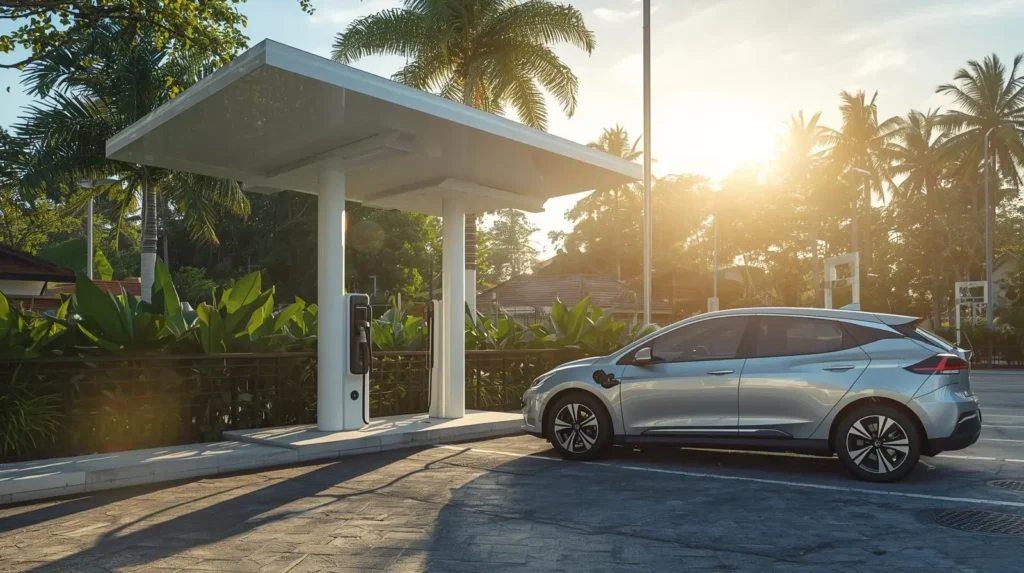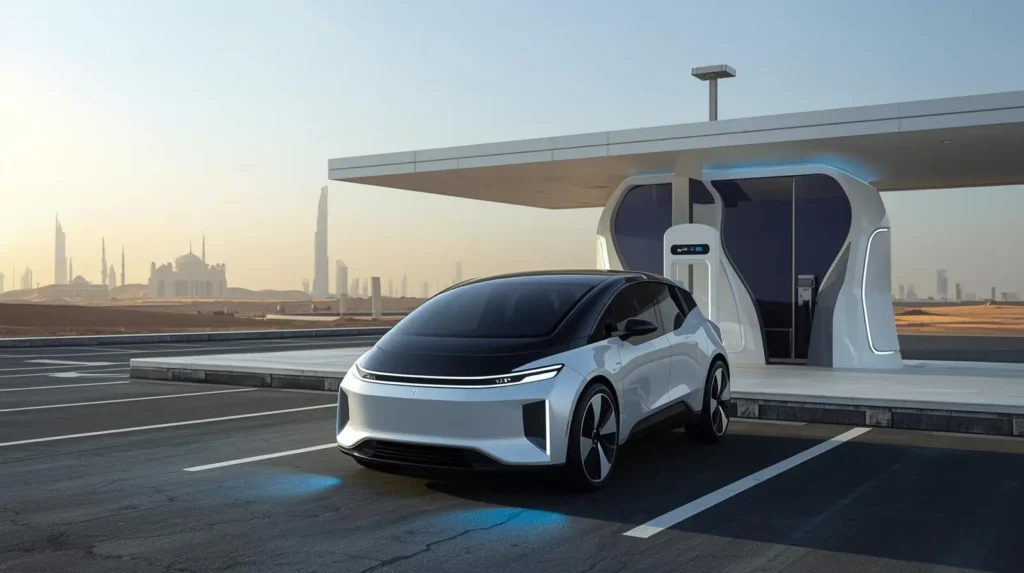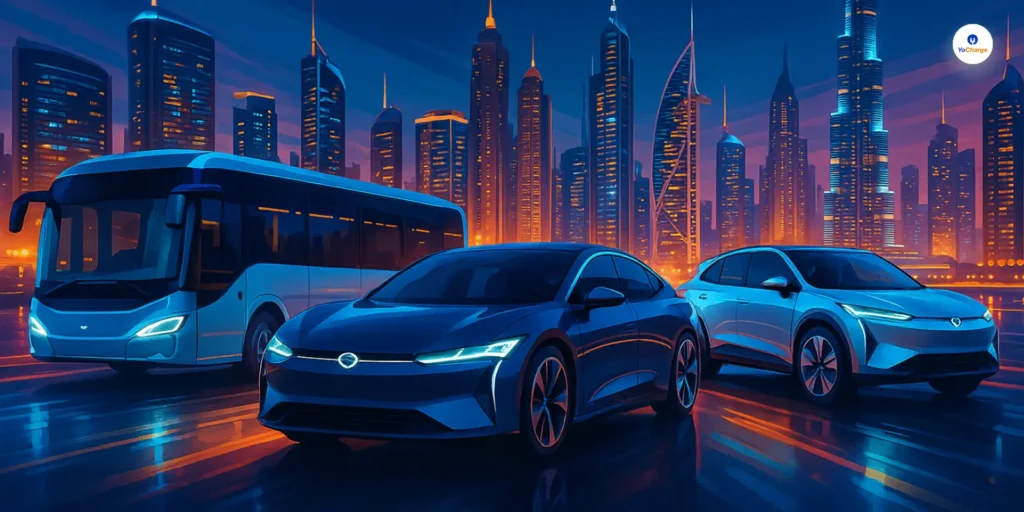
Strategies For Energy Retailers | The transportation sector is undergoing a significant transformation driven by the rapid rise of electric vehicles (EVs). According to a report by the International Energy Agency (IEA), global sales of electric cars are surging, with electric vehicles accounting for 18% of new car sales in 2023. This trend is expected to continue, with EVs projected to play a key role in achieving net-zero emissions by 2050.
This shift towards electric mobility has a profound impact on the energy sector. Traditionally, gasoline and diesel have fueled the transportation sector. However, with the rise of EVs, electricity is becoming the dominant fuel source. This presents a significant opportunity for energy retailers to enter the EV charging market. As more and more consumers transition to electric vehicles, the demand for convenient and reliable charging infrastructure will continue to grow.
In this article, you will learn the top 3 strategies for energy retailers to enter the EV charging market.
The Challenge: Redefining Customer Experience
The way we refuel our vehicles is fundamentally changing. Unlike the traditional gas station model, where filling a tank takes just a few minutes, charging an electric vehicle can be a very different experience.
Firstly, charging times for EVs vary significantly. Level 2 chargers, commonly found in homes and workplaces, can take several hours to fully charge a battery, while DC fast chargers, typically located along highways, can offer a much faster refuel in 30-60 minutes. This difference in charging speeds necessitates a shift in how energy retailers approach customer experience.
Secondly, unlike the quick in-and-out nature of a gas station visit, the longer dwell time during EV charging presents a unique opportunity. To cater to this new customer behaviour, a customer-centric approach focused on three key elements is crucial: convenience, speed, and transparency.
- Convenience: Energy retailers must ensure a seamless charging experience. This includes offering easily accessible charging stations in convenient locations, user-friendly interfaces for payment and charging initiation, and potentially even integrated apps for managing charging sessions remotely.
- Speed: While DC fast chargers offer a quicker solution, expanding their availability and ensuring efficient charging infrastructure will be critical. Additionally, exploring innovative solutions like battery-swapping technologies could further enhance perceived speed.
- Transparency: Customers need clear, upfront information about charging costs, station availability, and estimated charging times. This transparency builds trust and empowers drivers to make informed decisions about their charging needs.
Top 3 Strategies For Energy Retailers
Strategy 1: Leverage Existing Infrastructure
Energy retailers possess a valuable asset in their existing network of gas stations. This network can serve as a springboard for establishing a strong presence in the EV charging market. Here is how:
Repurposing Existing Locations
Many gas stations are strategically positioned in high-traffic areas, offering excellent visibility and accessibility for potential EV customers. This existing infrastructure can be effectively repurposed to accommodate EV charging stations.
Convenience and Amenities
The co-location of EV charging stations with convenience stores and restrooms already present at gas stations provides a significant advantage. Customers can utilize these amenities while their vehicle charges, enhancing the experience
Energy retailers can save money and make it easier to start offering EV charging by using their current network and customer patterns. This smart strategy helps them enter the EV charging market smoothly and affordably.
Strategy 2: Adopting Innovation In Charging Technology
The key to success in the EV charging market lies in offering a diverse range of charging options to cater to the varying needs of customers. Here is how adopting innovation in charging technology can be a winning strategy:
A Mix of Charging Speeds
Not all charging needs are created equal. Level 2 chargers, while slower, are ideal for overnight charging at home or workplaces. DC fast chargers, on the other hand, provide a much faster solution for long-distance travel or quick top-ups. By offering both options, energy retailers cater to a wider range of customer needs and usage scenarios.
Smart Charging Solutions
Partnering with technology providers to integrate smart charging solutions can further enhance the customer experience. Smart chargers can optimize charging based on factors like electricity grid demand and real-time pricing, potentially leading to cost savings for customers.
Additionally, they can provide valuable data on charging patterns, which can be used to improve station operations and future infrastructure planning.
Strategy 3: Competitive Rates and Green Energy Options
In today’s competitive landscape, offering compelling pricing structures and a commitment to sustainability are crucial for attracting and retaining EV customers. Here is how they could be a win-win strategy:
Transparent Pricing
Customers need clear and upfront information about charging costs. This includes options like flat fees per charging session, tiered pricing based on electricity usage, or even subscription models. A study found that 61% of EV drivers consider transparent pricing a major factor when choosing a charging station.
By providing clear and understandable pricing structures, energy retailers build trust and empower customers to make informed charging decisions.
Green Energy Advantage
As environmental consciousness grows, offering EV charging powered by renewable energy sources like solar or wind becomes a significant value proposition. This allows customers to reduce their carbon footprint and contribute to a cleaner environment.
According to a 2021 Pew Research Center article, younger generations like millennials and Gen Z are more likely to avoid fossil fuels and gas-powered cars than older generations. By adopting renewable energy sources, energy retailers can differentiate themselves and cater to the growing demand for sustainable transportation solutions.
Conclusion
In conclusion, entering the EV charging market requires strategies for energy retailers to adopt three key strategies: leveraging existing infrastructure, adopting innovation in charging technology, and offering competitive rates with green energy options. Retailers can attract EV customers by repurposing gas stations and providing amenities that offer convenience and accessibility. A combination of charging speeds and smart charging solutions can enhance customer experience and optimize operations.
Moreover, transparent pricing structures and green energy options resonate well with customers, particularly younger generations who prioritize sustainability. Data shows that 61% of EV drivers consider transparent pricing a major factor in choosing a charging station, and younger generations are more likely to avoid fossil fuels.
Therefore, adopting renewable energy sources can help retailers differentiate themselves and meet the demand for sustainable transportation solutions.
To enter the growing EV charging market, partner with YoCharge for innovative ev charging solutions. We develop the best strategies for energy retailers to get established in the EV charging market. Together, we can empower your business with innovative solutions and sustainable energy options, ensuring a greener future for all.



